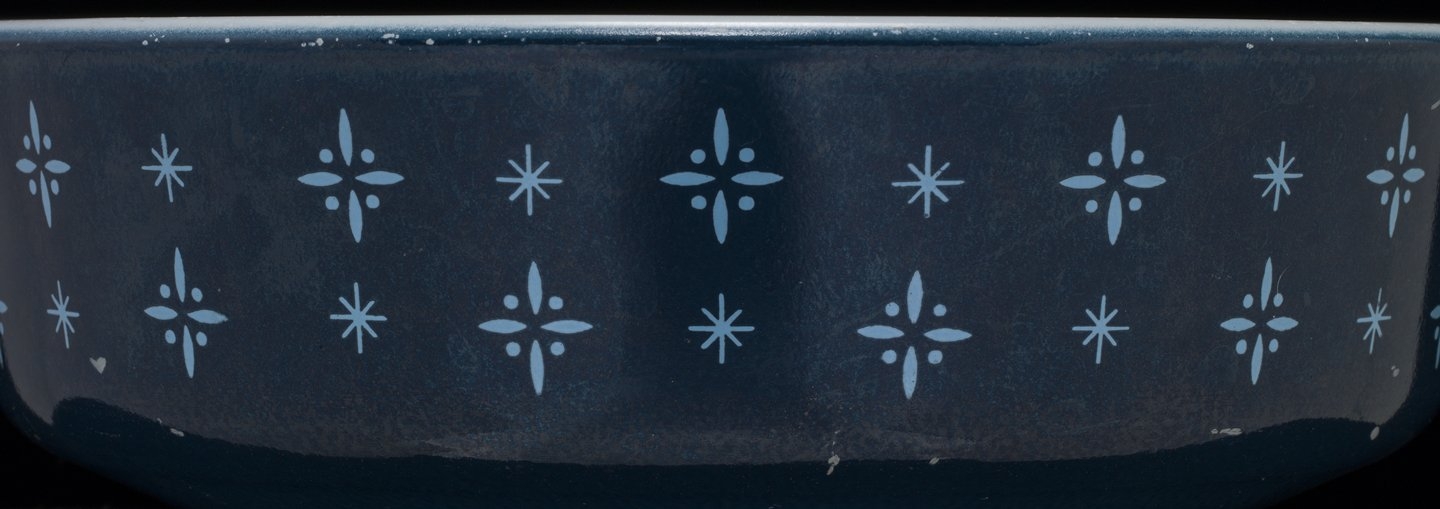While Foulard was never advertised in national ad campaigns as a retail product it can be found in three different colors; Gold Foulard and Blue Foulard, either in navy blue or light blue.
Primarily found as a beverage set, Foulard also exists on small cereal bowls. The beverage set came with an 8-cup carafe with candlewarmer and four 10oz mugs and was priced at $6.95.
The Gold Foulard and Blue Foulard beverage sets are depicted alongside the Early American beverage set in a 1965 dealer catalog. However, there were never any advertisements in magazines such as Ladies Home Journal or Better Homes and Gardens containing Foulard. This may have been because Foulard was a limited release meant as a market test piece since it only appears in dealer catalogs.
One of the more obscure Pyrex patterns, Foulard has a series of either eight-pointed or four-pointed stars alternating in an all-over pattern on the mug, carafe, and bowl.
Corning Glass Works offered its first patterned opalware gift set in 1953 when the Heinz Baking Dish was sold in grocery stores. Widespread distribution of promotional patterns occurred after the overwhelming success of the 1956 release of seasonal “decorator casseroles.” Using existing Pyrex shapes, gift sets featured new patterns offered for a limited production time. They often came with mounters, cradles, or candlewarmers and were advertised in the spring to appeal to Mother’s Day and summer wedding shoppers and in the fall to give the holiday gift-buyers something new. Corning continued to produce gift sets through 1983, creating nearly 135 different gift set patterns during that time. Corning intended these pieces to be sold for a limited time, and directed retailers to remove older, unsold promotions from the shelves.
Often, patterns used for these gift items were unnamed, or given names descriptive of the dish’s purpose, like “chip and dip set.” Collectors over the years have assigned names more reflective of the specific pattern.

